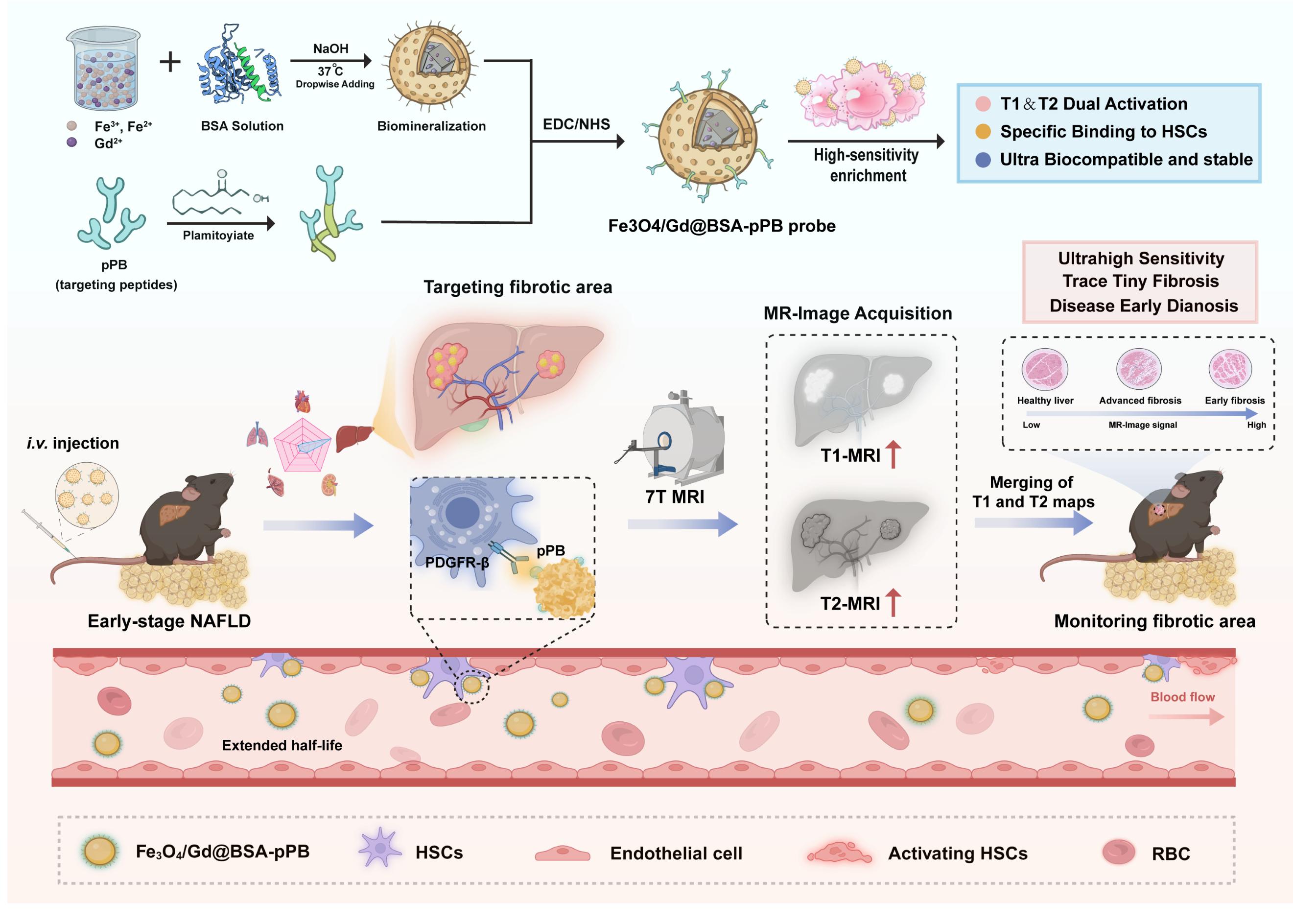
A research team led by Prof. WANG Junfeng from the Hefei Institutes of Physical Science of the Chinese Academy of Sciences has developed an innovative biomimetic dual-mode magnetic resonance imaging (MRI) nanoprobe for detecting early-stage liver fibrosis in non-alcoholic fatty liver disease (NAFLD).
The work, using the Steady High Magnetic Field Facility, was published in Advanced Science.
NAFLD is an increasingly prevalent global health issue, with higher rates observed among individuals suffering from obesity or type II diabetes. Early detection of liver fibrosis, before it progresses to irreversible stages, is critical for timely intervention and treatment. Although MRI is a promising non-invasive method for identifying liver fibrosis, traditional imaging techniques often lack the sensitivity needed to detect early-stage changes. Conventional contrast agents either pose safety risks or fail to specifically target fibrotic tissues.
In response to this challenge, the researchers developed a novel nanoprobe that mimics natural biological processes, specifically protein biomineralization, to target key biomarkers of early fibrosis, such as PDGFRβ—a receptor overexpressed by activated liver cells involved in fibrosis development.
Using biomineralized bovine serum albumin (BSA) as a framework, they created a dual-mode contrast agent capable of enhancing both T1 and T2 MRI signals. This approach combines the strengths of two imaging modes: T1-weighted images highlight fibrotic lesions, while T2-weighted images suppress background noise, providing clearer, more accurate results.
In laboratory and cellular tests, the nanoprobe demonstrated high imaging sensitivity, specific targeting of fibrotic cells, and excellent biocompatibility. When tested using a seven Tesla MRI system, the nanoprobe enabled precise visualization of early-stage fibrosis within just one hour, significantly improving diagnostic speed and accuracy.
This work provides a precise diagnostic tool for early liver fibrosis and holds significant clinical potential for disease prognosis assessment and recurrence monitoring, providing new hope for improving early intervention and treatment outcomes for NAFLD patients.

Early Diagnosis of Liver Fibrosis Using Dual-Mode T1 and T2 Imaging with the Fe₃O₄/Gd@BSA-pPB Nanoprobe (Image by MA Kun)

86-10-68597521 (day)
86-10-68597289 (night)

52 Sanlihe Rd., Xicheng District,
Beijing, China (100864)

